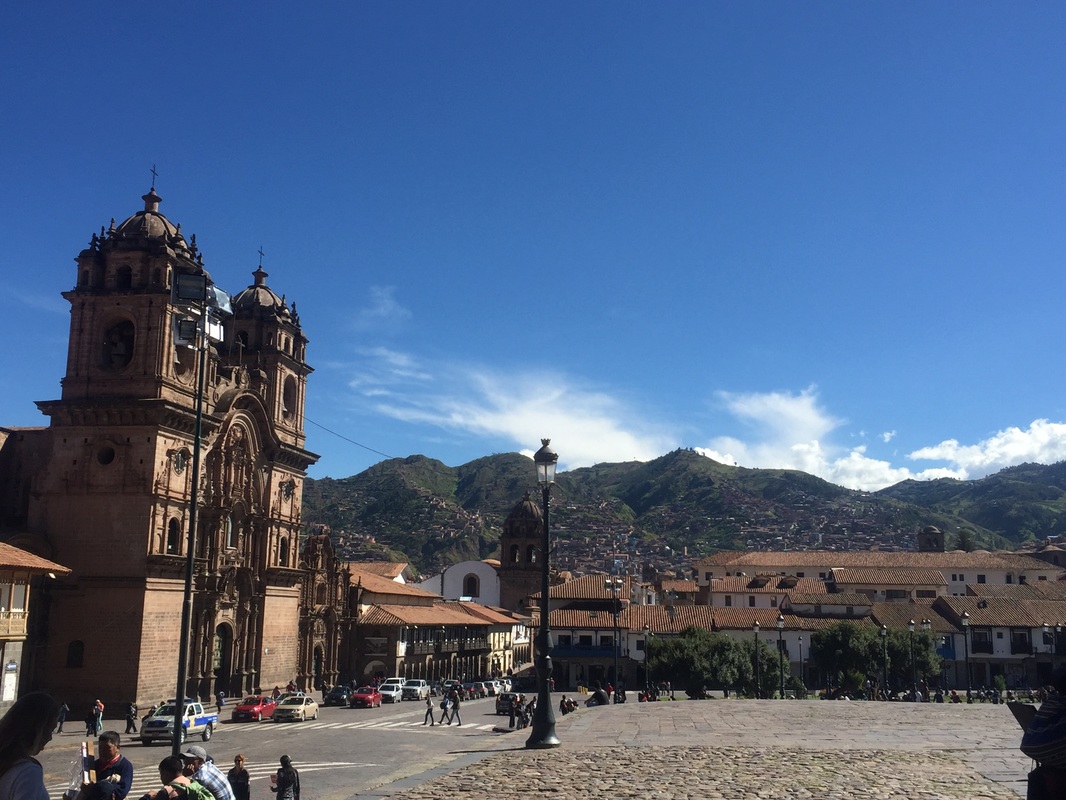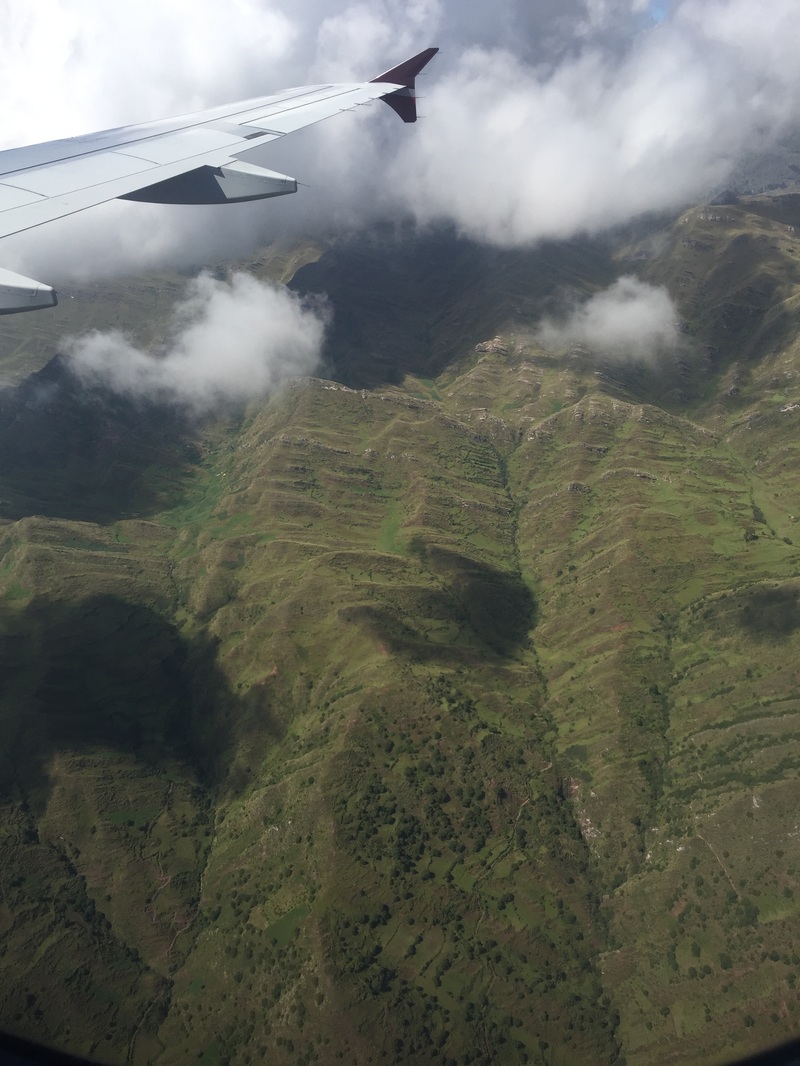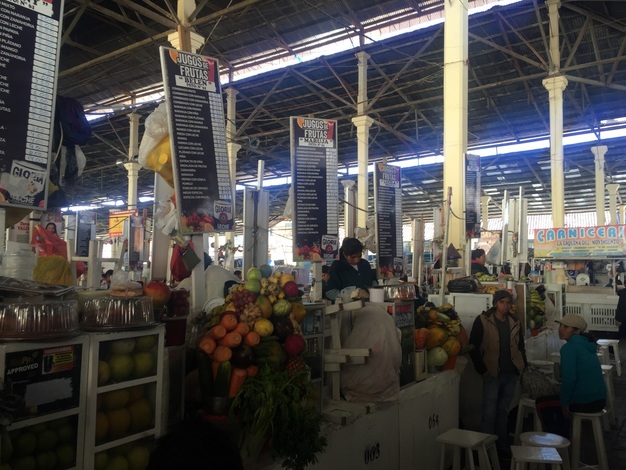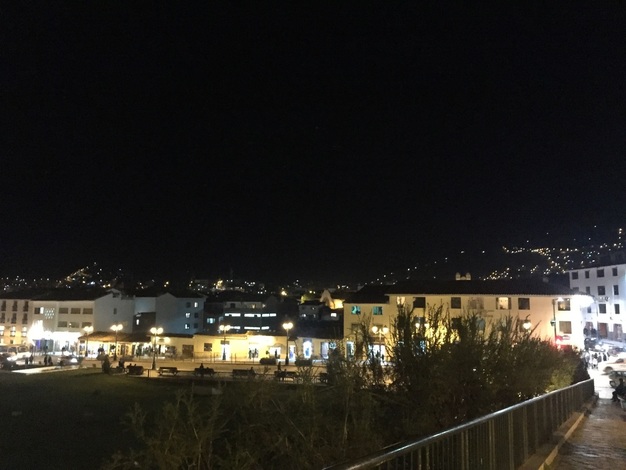SummaryAirport Rating ** Reception of locals ***** Cost: £££
I don't like flying at the best of times, which is strange considering all the flying that I do. Something about being in a glorified rocket where you put your life in the hands of complete strangers just doesn't work for me, no matter how many times I'm told it's the safest form of transport in the world. Usually, however, once I'm in the air at cruising altitude I tend to forget where I am and get lost into a book, or, on the larger flights a film or music until I have to land again. The flight into Cusco was genuinely one of the scariest flights I have done. The flight from Lima isn't particularly long, and unlike some other journeys it was a decent sized plane that was almost full. The flight was relatively smooth until we came in for landing. Cusco is a city built at a high altitude (almost 3,400m) and as we began our descent I very quickly realised that some of the surrounding mountains were actually higher than the plane which was now beginning to make a lot of sharp turns and a very steep and quick descent. Usually at this point I would look around and see people around me acting normal but almost everyone else had their hands dug into their seats, some had their eyes closed. I turned to look out the window and the hills and valleys looked ridiculously close to the plane, it was both beautiful and also panic inducing. The constant turns from the plane didn't help and I don't think I've ever been more glad than when we finally landed on the runway. We walked out into an environment significantly cooler than Lima and an airport which was extremely small. However, if I thought my journey into Cusco was bad, going out, almost two weeks later, would be even worse. A gem by the AndesThe first day in Cusco was spent walking around the city and getting a feel for the place and it's quite unlike anywhere I have been before. Cusco feels like a European city built in the foot of the Alps and many times I had to remind myself that I was in South America. The climate is cooler than surroundings area's and the city gets more rain than its neighbours (although thankfully it held off for most of the time I was there). Cusco was the traditional and historic capital of the Inca Empire, although the city pre-dated their ascent, being built around 900 years ago. Unlike numerous other cities that are plundered by invading armies, Cusco retained its Incan era importance in the new Hispanic world it found itself in. The city, which the Spanish fell in love with, became the centre of the proliferation of their culture. These factors means the city retains some of its indigenous architecture that is blended into colonial and republican architecture. The streets are narrow, hilly and built with cobbled stones. They may not be the most comfortable to walk on, but they are stunning to look at. The chaotic traffic in Lima is replaced by (relatively) more orderly traffic in Cusco. Cars actually stop at traffic lights and there are traffic wardens directing cars on every large street corner. Interestingly, all these traffic wardens seem to be women, and they look like they are about to go horse riding instead of conducting police business, I'm not sure who came up with their uniforms, but I'm pretty sure it had to be a man. Scars of colonialismThe main square of Cusco sits proudly near the top of the city. A large open space with park benches in the centre, the perimeter is covered in shops, restaurants, bars and the large Cathedral of Cusco which was built in the 16th century. Looking over the square and seeing the large mountains in the background is a pretty special sight. The main square was also the place where the last Incan ruler, Tupac Amaru II was killed by having his limbs tied to horses who then were sent in different directions. Colonialism has left so many scars across the globe; whether it was the Nihang's who were tied to cannons and blasted in Panjab for daring to want self rule or the Incan's who were massacred by the Spanish, there are so many examples of inhuman treatment of natives by European powers. Millions of tonnes of gold was shipped over to Spain from Peru yet people in these countries complain about having to pay financial aid to developing countries. I'm pretty sure financial aid is significantly cheaper than reparations. No matter what part of the day you venture into the city, there are always school children everywhere. I was under the impression that there were two school sessions per day; some kids go to school early morning and finish early afternoon, others begin in the afternoon and finish later in the evening. Even at 9/10pm I would see large groups of school children still in their uniforms. The world of CocaI spent a few hours on the second day visiting a coca museum near the centre of the city. Coca for the Incans (and Peruvians today) is similar to cannabis for Nihang Sikhs. Used as an aid for meditation as well as a way of combating a number of physical ailments, from pain to altitude sickness, the leaves can also be boiled in water to make Coca tea. The museum guide made sure to mention that derivatives of Coca, such as cocaine were never practiced in the country and agreed these derivatives remove some of the positive effects of the plant and turn it into a pure intoxicant. This is also true of many strains of cannabis that have transformed the plant from a meditative aid into a dangerous part of the big drugs problem in Panjab. Coca leaves are everywhere in Peruvian life. Everyone from the elderly to young children chew the leaves, and I found it an important component in combating altitude sickness whilst hiking. I preferred to drink the coca in a tea form. The drink doesn't taste too dissimilar from green tea and you can feel the stimulant effects quite quickly. I also found the coca leaves can be used as a medium of exchange, with the leaves being both exchanged for small goods and also gifted to other people. Cusco is a tourist city, and is priced as such. Food was a little more expensive than Lima, as were souvenirs. I took a trip to the large San Pedro market in the city that is geared toward both tourists and locals. The indoor market is huge, selling everything from food and drink to clothes, gifts and even massages. I had some fresh juice (which is pretty amazing everywhere in South America) and spent a bit more time walking around the market. Although I was about a week into my trip, I had managed to pick up key Spanish phrases and was able to hold simple conversations with most people. I had taken a Spanish course back in London, and I would recommend taking a short course before heading out to South America. Certain areas (and in the case of Bolivia, countries) speak very little English and a few phrases are important to get by. Beautiful in the day or nightCusco at night is transformed into a city that glitters like gold. Orange and blue lights are lit up against hills and mountains and they look spectacular. It gets pretty cold as soon as the sun goes down but it also coincides with a rush in the city, with people going out shopping, to restaurants and bars/clubs. The city has pretty much anything you would want with a particular emphasis on outdoor sports and hiking (not surprising as many people who pass through Cusco will go on the Inca Trek). There were a few times I really had to look twice at the scenery around me when I was walking at night, it really does feel like a special place.
Restaurants in Cusco range from small Peruvian diners to restaurants that wouldn't be out of place in expensive areas of large cities. There is a definite fondness for pizzas as they are sold almost everywhere, but there are also places that sell local delicacies such as guinea pigs and alpaca's. I spent a few days in Cusco before moving to Ollantaytambo and then beginning my trek to Machu Picchu. On my return almost a week later I spent another couple of days in the city where I managed to do my laundry and also ventured further out into the city. The wealthier inhabitants of the city live near the centre of the city, whilst poorer sections of the population live higher up in the hills. The journey is fairly significant on foot, but by car a 10 minute drive uphill brings you to a section that is similar to the favela's in Brazil with small living area's, rubbish bags piled up and rubble all over the street. Gangs of dogs walk close to bin area's to try and grab scraps of food. Looking down on the city below, you wouldn't believe you are in the same area. On returning to the city I found myself caught up in a large scale protest. As mentioned in a previous blog entry, my visit to Peru coincided with elections in Peru. Everywhere you looked, there were billboards and posters with the faces of candidates. Peruvians are very passionate about their politics and this protest was very passionate. Effigies, coffins, placards, all sorts were being carried by hundreds of local people. From the little Spanish I can read, I saw one placard that said in Spanish "no soy un terrorista" - or "I am not a terrorist" which I thought was interesting. the city was covered with riot police who seemed to have most of the situation under control, and I felt safe enough to walk amongst the protesters with no issue. A few handed me leaflets. A few people that I had made the trek to Machu Picchu with decided to have a night out to celebrate our return so we went to a local club. Inside, the club had just one room that played an eclectic mix of music. Significantly smaller than the club I worked for back in England and clubs in European or SE Asian countries, it still had a good atmosphere. In an interesting side note, a few hours into the night the DJ decided to play Panjabi MC. Here I was, the only Singh in the club, probably in Cusco. I felt it was important to show these guys the beauty of bhangra. It was definitely a lot of fun and also shows the proliferation of Panjabi culture. Its interesting because my first visit to Thailand coincided with a political coup. The police ensured the protests and riots were confined to one area of the city, far away from tourists and although I see some disturbances, it wasn't so visible. This was also true in Brazil where my visit coincided with impeachment protests against the ruling President. In Peru, they were much more visible and it was fascinating to see the political struggles of other people as it can prove invaluable in putting struggles of Panjabi's into context. I also get the feeling that its either a big coincidence, or I am inadvertently a destabilising influence on different countries. Cusco is an incredible city. It has a relaxed atmosphere by day and a lively fun atmosphere by night. There is a lot to see that I didn't have time for; the Inca Museum, Machu Picchu Museum as well as nearby archeological sites such as Pisac and Saksaywaman. It combined tradition with modernity in a way many cities fail and it's definitely one of the most unique places I have been to, it is also one of my favourites. There are always a few issues that can crop up in the best of places and mine happened on my journey to Bolivia. Before leaving Cusco, I'd be visiting one more place, a Peruvian police station...but that's a story for another entry. Comments are closed.
|
AuthorBritish Sikh, born in the Midlands, based in London, travelling the world seeing new cultures. Categories
All
|









 RSS Feed
RSS Feed